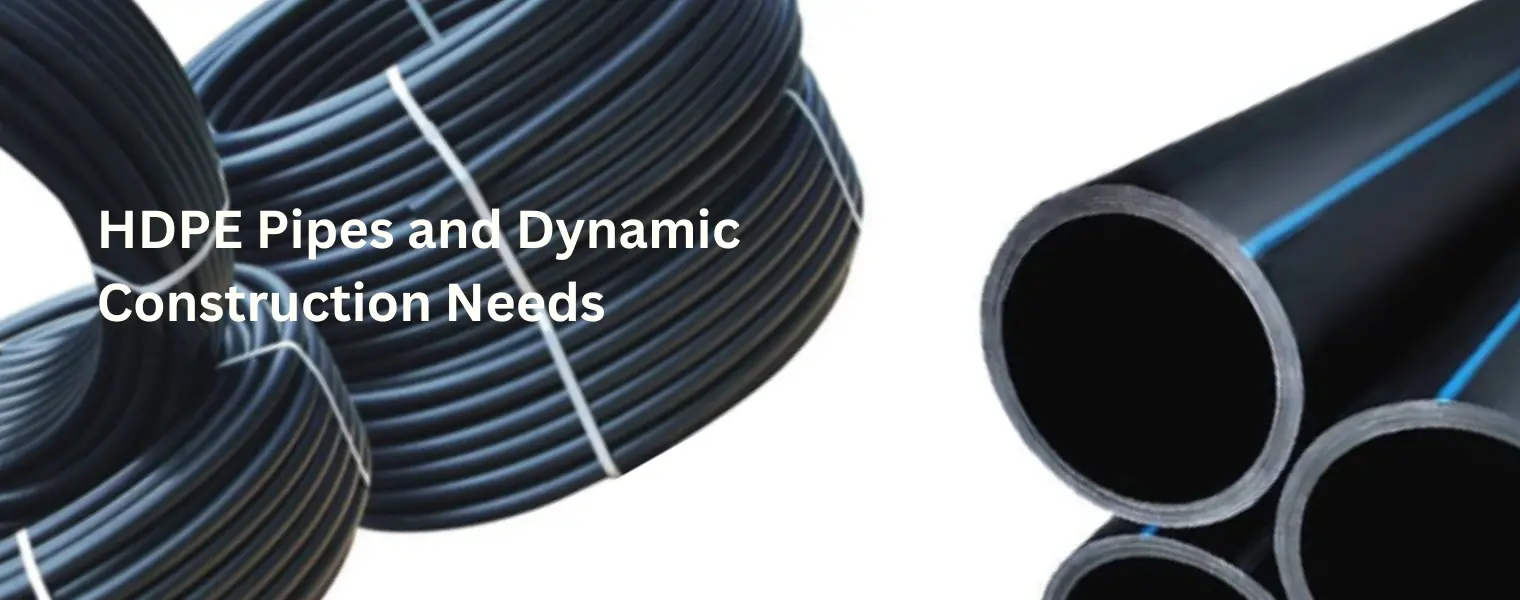
In the ever-evolving landscape of construction, adaptability is a prized quality, and High-Density Polyethylene (HDPE) pipes have emerged as the "flexible friends" of infrastructure projects. This blog delves into the dynamic nature of construction and explores how HDPE pipes, with their exceptional flexibility, seamlessly adjust to the ever-changing demands of the construction industry.
Construction sites are dynamic environments where unexpected challenges and changes can arise. HDPE pipes, with their inherent flexibility, become invaluable assets in adapting to shifting conditions, ground movements, and unforeseen obstacles.
One of the primary challenges in maintaining infrastructure systems is dealing with corrosion. Metal pipes are susceptible to rust, which can compromise structural integrity and lead to leaks. PVC piping, being corrosion-resistant, eliminates this concern. It can withstand exposure to various chemicals and aggressive substances commonly found in sewage and industrial effluents, making it a reliable choice in harsh environments.
In regions prone to seismic activity, the flexibility of HDPE pipes is a game-changer. Unlike rigid materials, these pipes can absorb and distribute stress, minimizing the risk of damage during earthquakes and ensuring the longevity of critical infrastructure.
Trenchless construction methods, such as horizontal directional drilling (HDD) and pipe bursting, require materials that can seamlessly adapt to the subterranean landscape. HDPE pipes, with their flexibility, revolutionize trenchless techniques, reducing disruption and enabling efficient installation.
The adaptability of HDPE pipes allows for streamlined installation processes with minimal disruption to existing infrastructure and the surrounding environment. This not only expedites construction projects but also minimizes the inconvenience to communities and businesses.
HDPE pipes are not confined to a single role; their flexibility opens the door to a multitude of applications. From water supply and sewage systems to gas distribution and industrial pipelines, these pipes adapt seamlessly to diverse construction needs.
Extreme temperatures can pose challenges to construction materials. HDPE pipes, with their elasticity, remain resilient in both high and low temperatures, ensuring reliable performance in a variety of climatic conditions.
The adaptability of HDPE pipes aligns with the growing trend of smart infrastructure. These pipes can accommodate sensor technologies and smart monitoring systems, paving the way for more intelligent and responsive construction practices.
As construction methodologies evolve, the demand for adaptable materials becomes increasingly critical. HDPE pipes the "flexible friends" of the construction industry, demonstrate the transformative power of flexibility in navigating the challenges of dynamic construction environments. From seismic resilience to revolutionizing trenchless techniques, HDPE pipes are not just conduits; they are dynamic solutions that mold themselves to the ever-changing needs of modern construction. Embracing the flexibility of HDPE pipes is not merely a construction choice; it's a strategic move towards building a more responsive and resilient future. For the finest HDPE pipes reach out to us at Polyfab.